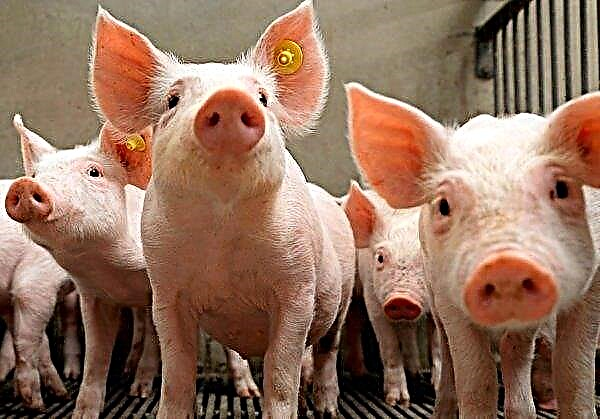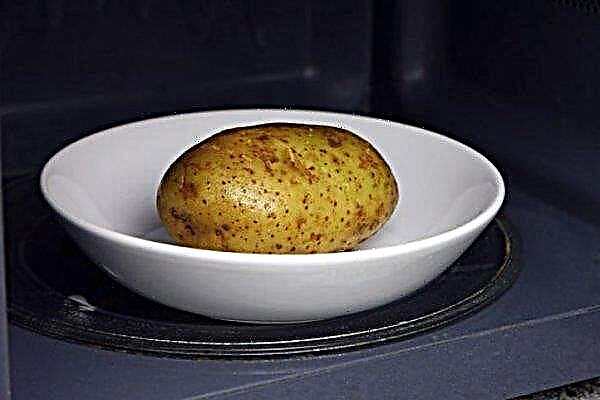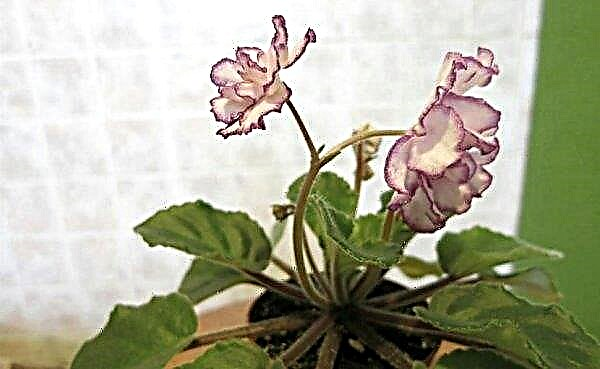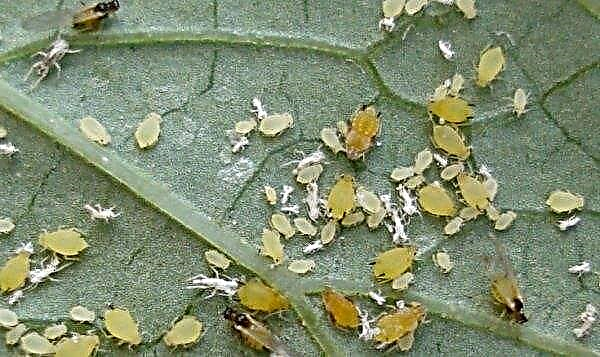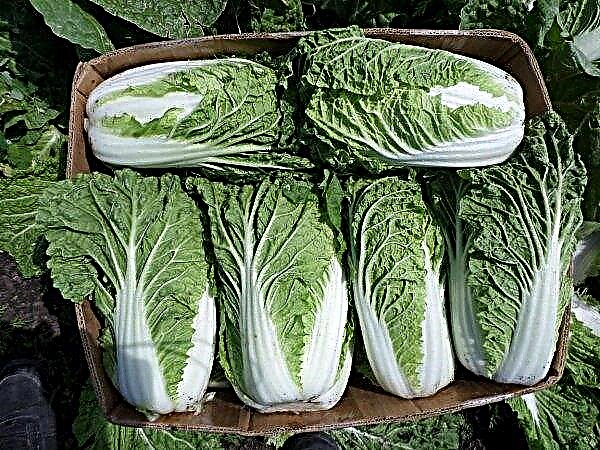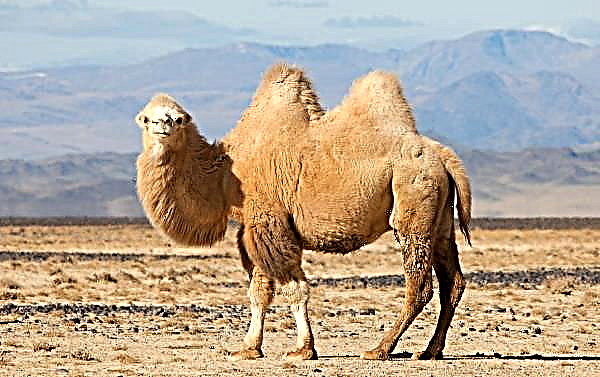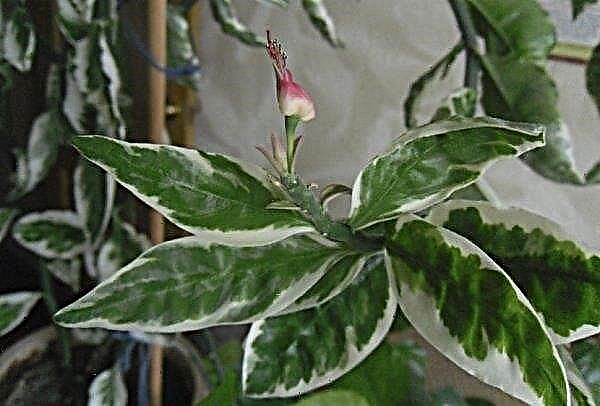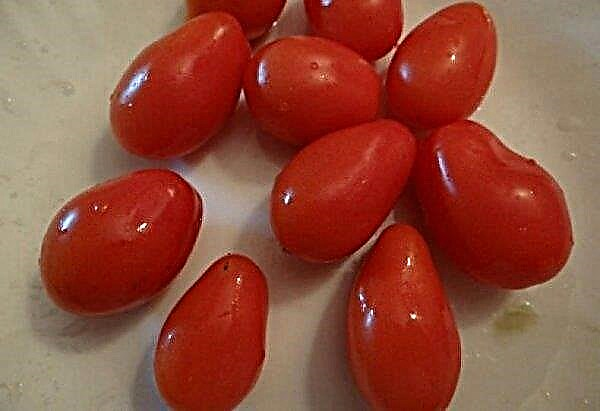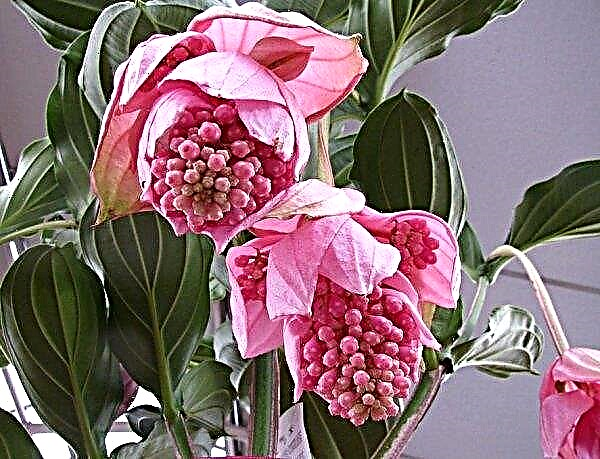Chickpea, or Turkish peas, is a bean plant cultivated in Central Asia, which takes third place in the world among the most used. In order to grow chickpeas in your garden, you must, among other things, carefully read the list of diseases and pests from which you need to protect the plant. Ascochitosis is considered one of the most common diseases. Read more about it and other chickpea diseases in this article.
Seed Infections
Chickpea Growing - The process is simple, because the culture is unpretentious in care, and the fruits of culture can enrich and diversify any diet.

The only troubles that gardeners face are attacks of diseases and pests. Often, the diseases are infectious and are the result of seeding infected seed material.
Among the main infections of chickpea seeds are pathogens of such diseases:
- ascochitosis;
- Fusarium
- white rot;
- gray rot;
- drinking root rot;
- downy mildew;
- bacterial spotting;
- deforming mosaic;
- anthracnose.
Did you know? One of the common names for chickpeas is lamb or owl peas, which is due to the shape of the pod, which resembles a lamb's head with a bird's beak.
Turkish peas can also be attacked by pests:
- pea aphids;
- pea weevil;
- bean kernels;
- nodule weevils;
- pea moth;
- chickpea mining flies.
Chickpea Ascochitosis
Ascochitosis is one of the most dangerous chickpea diseases. How to recognize, foresee and eliminate it - read on.
Maliciousness and disease description
This is a fungal disease, which manifests itself in the form of brown, bordered with dark brown rims, spots on the leaves, stems and fruits of the culture. If you look closely at the spots, you can easily see in their center something like bags with fungal spores.
These bags are called pycnids. Pycnidia with mature spores bursts, and the disease spreads with renewed vigor, affecting healthy parts of already infected crops, as well as healthy plants. Sick seeds or chickpea seedlings can be the source of infection. Also, one of the main routes of infection is the spread of pycnospores by wind and rain.
Important! The development of ascochitosis is facilitated by rainy cloudy weather and high air humidity at an ambient temperature of + 20 ... + 25 ° С.
The harmfulness of ascochitosis is manifested in the fact that fungi can destroy the entire planting of chickpeas and transfer to other types of legumes. In addition, the disease is dangerous in that it affects the root system of the plant and leads to its death. Affected fruits of ascochitosis are unsuitable for eating.
Treatment and prevention
It is best to prevent the appearance of ascochitosis and carry out preventive measures for this: sow the seeds of chickpea early, after digging deeply in the soil and taking into account all the rules of crop rotation. Immediately before sowing, it is recommended to sanitize the seed by placing the peas in a weak solution of potassium permanganate for 2-3 hours.

You can cure sick chickpea bushes by spraying them with a 1% solution of Bordeaux fluid or a 0.4% solution of copper chloroxide. It is necessary to carry out spraying in the morning, after the dew has fallen, choosing for this a windless and cloudless day. Repeat the treatment procedure after 7-14 days.
Other diseases
Among the most common chickpea diseases listed above, it is worth noting fusarium, gray mold, rust and root rot.
Fusarium
Fusarium infection is a fungal infection that affects primarily the chickpea root system. The main source of Fusarium fungus is diseased soil and seeds.
Fusarium on peas can be recognized by the fact that the stem at the base becomes brown. This means that the fungi managed to hit the roots and cover them with brown spots, and have already risen to the stem. The disease destructively affects the state of the root system: the rhizome becomes loose, which leads to wilting of the plant, and soon to its death.
Important! Favorable conditions for the development of spores of Fusarium - a protracted cool period and high humidity. The infection spreads most quickly in dry and hot weather.
Gardeners recommend curing diseased bushes and preventing the spread of fungi to healthy plants with a fungicide solution - for example, you can use Kolosal Pro. It is necessary to prepare the solution, strictly observing the recommendations specified in the instructions. Prevention of Fusarium is to comply with crop rotation rules: You can’t sow chickpeas in the same place for 4-6 years. Before planting, seeds are recommended to germinate in a special solution - for example, "Kornevine".
Prevention of Fusarium is to comply with crop rotation rules: You can’t sow chickpeas in the same place for 4-6 years. Before planting, seeds are recommended to germinate in a special solution - for example, "Kornevine".
Gray mold
Gray mold is another type of fungal infection that infects this crop. You can recognize the disease by a characteristic feature: a thick gray coating that covers the flowers and pods of peas. The base of the fruit acquires a brown color, their size increases, as if the pods swell.
Control measures - treatment with fungicidal solutions of such drugs:
- "The keeper";
- "Purebloom";
- "Discourse";
- "Gates."
To prevent the appearance of gray rot on chickpeas, disinfect its seed before planting, do not violate crop rotation rules, conduct moderate watering, because the most favorable conditions for the fungus are high humidity, prolonged and frequent rainfall.Did you know? Peas chickpeas belong to the vegetable and meat categories, so it is an integral part of a balanced diet. For example, in Australia, this type of bean crop is included by the government in a plan specially developed for those who advocate a balanced diet in both categories.
Rust
This type of fungal disease is one of the most dangerous, since the fungus can infect completely healthy crops by hitting them from the air. The causative agent of rust is the dioecious fungus that lives on milkweed.
The disease reports itself in early spring: the milkweed overwintered on the roots affects the young euphorbia, covering the plant with ecidiospores (spring spores of rust) in the form of orange-yellow pads. Ecidiospores are able to be carried by the wind over long distances, and if they fall on the bushes of Turkish peas, they begin to sprout and multiply rapidly.
Important! The harmfulness of rust lies in the drying of the plant. Fruits on chickpea bushes affected by this disease do not develop.
Rust can be detected on chickpeas only in the middle of summer. By this time, the epidemiospores already have time to form orange-brown pillows on the foliage, stalks and pods of chickpeas - uredospores. Until the fall, the uredospores ripen, acquire a black color, and winter fungal spores develop in them - telethospores that attack euphorbia. Such is the cycle of rust in the environment.
Agronomists and gardeners recommend removing rust on chickpeas with fungicides. ("Homosila", "Strobi"). The frequency of spraying and dosage are indicated in the instructions.
In order to protect chickpea crops from rust, it is necessary to sow mutton peas in early spring, carefully destroy weeds, and also process sprouts and adult bushes with the fungicides indicated above for preventive purposes.
Root rot
This is an almost fatal chickpea disease, as fungi infect the root system - a source of growth, nutrition, and culture viability. A diseased root system stops supplying the plant with beneficial substances and water, which leads to a decrease in leaf tug. Foliage wilts, becomes lethargic, and then fades. The bush begins to die.
The danger of the disease lies in the fact that the gardener often takes the wilting of the foliage for a lack of moisture, begins to water the bush abundantly, which only contributes to the spread of the fungus, and when he realizes what’s the matter, it is already impossible to save the plant.
The source of root rot is infected soil, seeds or plant debris.Spraying with fungicides (“Homosil”, “Chistotsvetom”) will help to cure sick plants. Dosages, rules and frequency of spraying, read the instructions. However, it is much easier to prevent the problem than to fix it, therefore, root rot should be prevented in a timely manner.Did you know? According to archaeological excavations, the inhabitants of the Middle East began to cultivate chickpeas for the first time another 7,500 years BC. e.
To do this:
- cultivate the soil thoroughly;
- Do not disturb crop rotation;
- sanitize seeds;
- timely feed the culture with phosphorus and potassium;
- choose only healthy and high-quality seed material for sowing.

Chickpea Pests
Chickpea is not only suffering from disease. Pests also differ in their destructive influence on culture. These are insects such as the pea moth, pea scoop, bean kernels and chickpea mining fly.
Pea Moth - Small Butterflywhose wingspan is 12–17 mm. Butterfly wings are dark brown with white front edges. The caterpillar is light yellow in color; its length varies between 7–12 mm.
The laying period of butterflies is the flowering time of this variety of peas. The eggs are oval, yellow. During the season, the codling moth lays eggs only 1 time. Hatching in 5–10 days, the larvae penetrate the formed peas. A well-fed larva hides in the soil, where it weaves a cocoon and hibernates. The harmfulness of the pea moth is manifested in the fact that it destroys the crop. Eliminate the uninvited guest will help the processing of chickpeas with insecticides - "Bi-58", "Lannat". Prevention - deep digging of the soil in the fall, the destruction of discovered larvae.
The harmfulness of the pea moth is manifested in the fact that it destroys the crop. Eliminate the uninvited guest will help the processing of chickpeas with insecticides - "Bi-58", "Lannat". Prevention - deep digging of the soil in the fall, the destruction of discovered larvae.
A pea scoop is a small bright green bug, which can not only destroy the crop, but also lead to the death of the entire chickpea planting. The fact is that he literally sucks out all the juices from the stems, leaves, flowers and fruits of Turkish peas.Important! Avoid getting insecticide in your eyes.

Therefore, if such a beetle is found on plants, it is necessary to immediately spray the plot with a solution of Fury, Iskra, or Fastak insecticides, but no later than 10 days before the start of the harvest. To protect chickpea plantings from pea scoops, weeds must also be destroyed and wild bean crops.
Bean kernels
Bean grains are called small (up to 4 mm long) brown bugs. Pests are recognized by this description: their elytra are dark brown in color, light spots dissecting the entire length of it. Bean caryopsis lays oblong eggs (up to 0.7 mm long) on the ground part of the plant, from which bent legless larvae soon appear, covered with multiple bristles.

The pest enters the chickpea planting along with the seed material (larvae hide in it). Cereals attack peas during fruiting (fruit setting and ripening). At this time, the female manages to lay eggs (20–40 pieces per clutch, up to 100 pieces per season) inside the plant. To do this, she gnaws the desired hole in the dorsal seam of the chickpea fruit.
After 5–45 days (depending on weather conditions), larvae emerge from the eggs, penetrate the fruits of Turkish peas and develop there. One pea can contain up to 20 larvae.Pellet larvae mature in gnawed chickpea chambers, and soon bugs crawl out through holes in the fruit shells. Larvae settled in the pulp of fruits fall into human dwellings or large stores for legumes, where they successfully develop and move to other varieties of legumes.
The damage to this insect is damage to the crop: chickpeas become unusable.Preventive measures from the pest are to select healthy and high-quality seeds for sowing, as well as to collect a ripe crop in a timely manner. And in order to eliminate uninvited guests from your site, you need to spray with insecticides such as Iskra, Fastak.Important! Chickpeas selected for sowing must be disinfected by heating: place the seeds for 1 hour in an oven heated to 60 ° C.
Chickpea Mining Fly
A black insect is called a chickpea mining fly. with yellow antennae and sides of the head, mesoscutum, scutellum and hips. The peculiarity of this pest is that it only feasts on chickpeas. Other leguminous mining fly does not attack.
Hatching in 5–10 days, the larvae feed on deciduous cells, making narrow, bright holes in the leaves that can be found only on the upper side of the leaf. After 5–7 days, the larvae fall on the soil and pupate, and after 2 weeks turn into flies.
Important! The narrow passages made by the larvae inside the leaf are called mines, hence the name — mining fly.
The harmfulness of the insect consists in the fact that it leads to yellowing, drying, and then falling of the leaves of chickpea bushes, and this, in turn, is fraught with loss of yield.You can get rid of chickpea mining flies by spraying plants with the Fury insecticide. The plant must be processed no later than 10 days before the start of harvest.
Preventive measures consist in thorough cultivation of the soil and destruction of the detected pupae, as well as in timely cultivation and weeding of the planting. After the crop has been harvested, it is necessary to deeply dig the soil and remove the remains of plants.
Disease and Pest Prevention
Before planting chickpeas in your own garden, do all the necessary preventive measures to protect it from diseases and pests:
- In autumn, remove the area from the remains of the collected crops.
- Dig the soil deep after harvesting in late autumn and clear the area of weeds and their roots.
- In the spring, before planting, thoroughly loosen the soil.
- Destroy any larvae found in the soil.
- Do not plant chickpeas in the same area every year - adhere to crop rotation rules: you can plant chickpeas with a frequency of 4-5 years.
- Choose high-quality and healthy seed material for planting.
- Germinate and sanitize the seed.
- Timely weeding, loosening the soil under the crop, remove weeds.

So, the cultivation of an oriental culture called chickpeas in our vicinity is possible and affordable, the main thing is to protect it from pests and diseases. And for this you need to familiarize yourself with the rules for cultivating this variety of peas, and a rich harvest is guaranteed.

